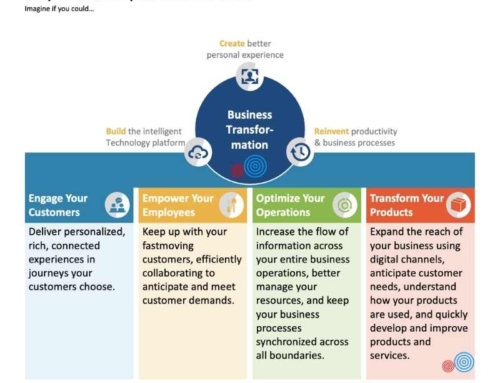Visualising Stages of Your Business Growth
Introduction
As a business owner or entrepreneur, you must be able to visualise where your business is currently and what goals you want to achieve with your company.
To gain the ability to visualise, you must understand the distinct stages of business growth to assess your current position and chart a path towards your desired goals. This article will explore the five stages of business growth(from startup to scaleup): Foundation, Survival, Self-sustaining, Growth Phase, and Mature Stage. By examining expected revenue (sales), profit, and cash levels within each stage, you will gain valuable insights to identify where your business stands and where it is heading.
1. Foundation Stage: Laying the Groundwork
The foundation stage marks the early phase of your business, where revenue is minimal or non-existent. As an entrepreneur, your primary focus is on establishing your business idea, creating a solid business plan, and conducting market research to validate your concept. As you invest in the business’s future potential, cash and profit levels are expected to be negative during this stage.
2. Survival Stage: Overcoming Challenges
The survival stage is characterised by generating enough revenue to cover essential expenses. You aim to establish a customer base and refine your business model based on market feedback. While revenue starts to increase, profitability may still be low, and cash levels may fluctuate. Adapting to market conditions, addressing early weaknesses, and maintaining a solid cash flow are vital for surviving this critical stage.
3. Self-Sustaining Stage: Transitioning to Stability
The self-sustaining stage is a significant milestone for your business. During this phase, revenue becomes positive, covering operational costs and leading to a reasonable level of financial stability. Profitability starts to increase as well, although it may still be modest. Cash levels may vary, and there may be a negative cash flow until profits accumulate to pay off early investments. Focus on refining operational efficiency, optimising processes, and fostering customer loyalty to ensure consistent profitability.
4. Growth Phase: Scaling for Success
Scaling for Success The growth phase is characterised by accelerated revenue and profit growth, indicating increased market share and business expansion. Companies pursue different growth strategies to drive revenue, profitability, and stable growth.
Revenue Growth:
Companies focus on increasing total revenue by acquiring more customers, increasing the average sales value per customer, increasing customer frequency, and expanding their market share. Geographic expansion, especially for online businesses, plays a significant role in revenue growth.
Profitability Growth:
In addition to revenue growth, profitability growth entails optimising production costs, managing running costs, and maximising marginal profit. Marginal profit refers to the profit earned from each additional unit sold, emphasising the importance of maintaining a healthy profit margin.
Stability Growth: Building Resilience
Stability growth centres around improving and stabilising the business systems that consistently produce expected results. This involves enhancing all business resources, including people, equipment, processes, and internal/external stakeholders. Developing skills and capabilities across resources is crucial for sustained stability.
Cash levels during the growth phase are primarily positive, although business owners may choose to reinvest funds to fuel further growth. Revenue and profit continue to increase, reflecting the company’s upward trajectory.
5. Mature Stage: Sustained Profitability and Strategic Choices
Sustained Profitability and Strategic Choices The mature stage represents a stable and successful business that consistently delivers profit and revenue without a strong focus on further growth. At this stage, revenue and profit growth stabilise, reaching a plateau. However, the cash levels may not only be affected by the income and expenses and also vary based on the owner’s decisions regarding dividend payments and reinvestment.
In the mature stage, business owners have three options:
- Scale the Company: Replicate successful systems to multiply profit, such as establishing a franchising model.
- Maintain the Status Quo: Sustain profitability without significant further growth, ensuring stability and consistent revenue.
- Decline in Profitability: For various reasons, such as the owner’s loss of motivation or reaching capacity limits, businesses may choose not to pursue further growth, leading to a decline in profitability.
Conclusion:
Understanding the different stages of business growth is essential for business owners and entrepreneurs to assess their current position and define their future goals. By examining expected revenue (sales), profit, and cash levels, you can identify which stage your business currently resides in and make informed decisions to propel it forward. Remember, each stage presents its own challenges and opportunities. Embrace the journey, adapt to market conditions, and continuously strive for improvement as you navigate from startup to scaleup.
Your Next Steps
Read the Case Study
To gain further insights and explore practical ideas for each business stage, we invite you to download a recent case study to understand the business stages further.
Download Workbook
We have also prepared a simple workbook to map your business growth. This resource will give you the initial start to imagining your next level of development and beyond and inspire you to navigate the unique challenges and opportunities at every stage.
Invitation to Join Our Community
To gain further insights and explore practical ideas for each business stage, we invite you to download a recent case study to understand the business stages further.
Get 1-on-1 Help
To gain further insights and explore practical ideas for each business stage, we invite you to download a recent case study to understand the business stages further.





